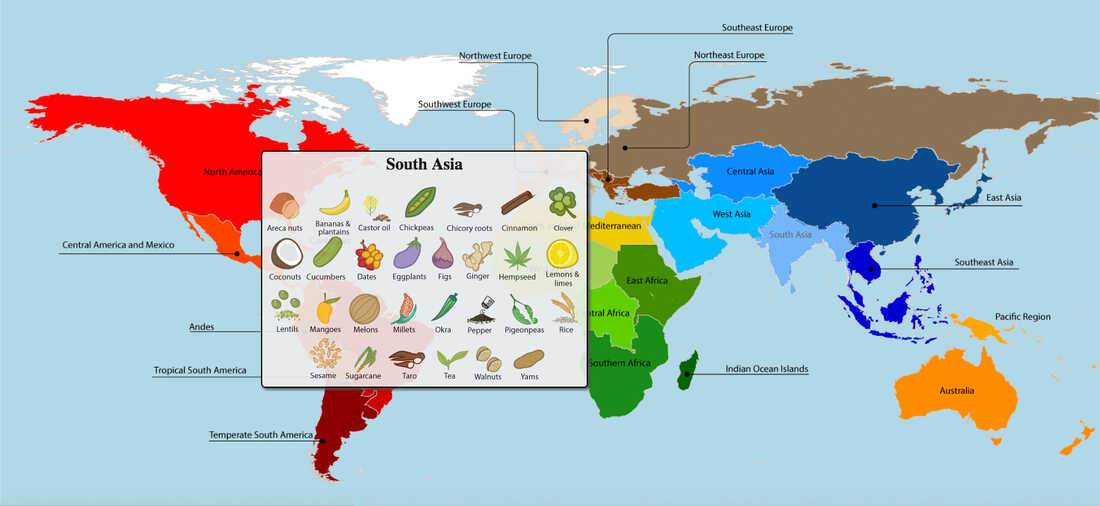
In 2025, the allure of exploring different cultures through their cuisine is stronger than ever. Culinary travel offers a deeply immersive experience, allowing you to connect with local traditions, understand historical influences, and savor authentic flavors that you simply can't replicate at home. Forget generic tourist traps; this guide is about finding genuine culinary experiences that enrich your understanding of the world, whether you're a seasoned foodie or a curious beginner. From bustling street food markets to refined dining establishments, a world of tastes awaits.
Embarking on a culinary adventure requires careful planning and an open mind. This guide will equip you with the knowledge and tools to navigate the diverse world of global cuisine, ensuring your travels are both delicious and enriching.
Planning Your Culinary Journey: A Step-by-Step Guide
1. Defining Your Culinary Interests
Before booking your flight, consider what types of culinary experiences excite you most. Are you passionate about mastering specific cooking techniques, like pasta-making in Italy or sushi preparation in Japan? Are you drawn to the vibrant chaos of street food vendors in Southeast Asia, or do you prefer the elegance of Michelin-starred restaurants? Identifying your preferences will help you narrow down your destination choices and tailor your itinerary.
For example, someone interested in sustainable and farm-to-table dining might consider a trip to the Basque Country in Spain, known for its commitment to local ingredients and traditional farming practices. Conversely, a traveler seeking bold and spicy flavors might be drawn to Sichuan, China, renowned for its peppercorn-infused dishes.
2. Researching Destinations and Culinary Traditions
Once you have a general idea of your culinary interests, delve into detailed research about potential destinations. Explore online resources, travel blogs, and cookbooks to learn about local ingredients, traditional dishes, and regional specialties. Pay attention to seasonal availability of ingredients, as this can significantly impact the quality and authenticity of your culinary experiences. Websites like Serious Eats and Food & Wine offer excellent articles and guides on various cuisines around the world.
Don't limit yourself to tourist guides; explore academic papers and historical articles to understand the cultural context behind the food. For instance, understanding the history of colonialism in India can provide valuable insights into the diverse and complex flavors of Indian cuisine.
3. Choosing the Right Culinary Experiences
The world offers a diverse range of culinary experiences, from cooking classes and food tours to market visits and chef's table dinners. Select experiences that align with your interests and skill level. Consider booking tours led by local experts who can provide insider knowledge and access to hidden gems. Look for cooking classes that focus on traditional techniques and use locally sourced ingredients. Online platforms like Viator and Airbnb Experiences offer a wide variety of culinary tours and classes.
When choosing a restaurant, prioritize establishments that are popular with locals. Avoid overly touristy spots and seek out recommendations from hotel staff, tour guides, or fellow travelers. Look for restaurants that showcase regional specialties and use fresh, seasonal ingredients. Don't be afraid to venture off the beaten path and explore hole-in-the-wall eateries.
4. Budgeting for Culinary Travel
Culinary travel can range from budget-friendly to extravagant, depending on your choices and preferences. Set a realistic budget that accounts for accommodation, transportation, meals, and activities. Street food and local markets offer affordable and authentic culinary experiences, while fine dining restaurants can be a significant expense. Consider cooking some of your own meals to save money and explore local ingredients.
Remember to factor in the cost of transportation between restaurants, markets, and cooking classes. Public transportation is often the most affordable option, but taxis and ride-sharing services can be more convenient. Research the average cost of meals in your chosen destination and adjust your budget accordingly.
5. Preparing for Your Trip
Before you depart, familiarize yourself with local customs and etiquette related to food. Learn basic phrases in the local language, such as "thank you," "delicious," and "what is this?" Pack appropriate clothing and footwear for culinary activities, such as comfortable shoes for walking in markets and aprons for cooking classes. Don't forget to bring any necessary medications or dietary supplements. If you have any food allergies or dietary restrictions, communicate them clearly to restaurants and tour operators in advance.
Navigating Cultural Differences in Dining Etiquette
Dining etiquette varies significantly across cultures. What is considered polite in one country might be offensive in another. Research local customs and traditions before your trip to avoid unintentional faux pas. For example, in some Asian countries, it is customary to use chopsticks to eat rice and noodles, while in other cultures, it is considered impolite to eat with your hands. In some Middle Eastern countries, it is customary to remove your shoes before entering a home or restaurant.
Always be respectful of local customs and traditions, even if they differ from your own. Observe how locals behave and follow their lead. If you are unsure about something, ask a local for clarification. Learning a few basic phrases in the local language can go a long way in showing respect and building rapport.
Long-Term Considerations: Sustainable Culinary Travel
As culinary travelers, we have a responsibility to minimize our impact on the environment and support local communities. Sustainable culinary travel involves making conscious choices that benefit both the traveler and the destination.
1. Supporting Local Farmers and Producers
Choose restaurants and markets that source ingredients from local farmers and producers. This helps to reduce carbon emissions associated with transportation and supports local economies. Look for certifications and labels that indicate sustainable farming practices, such as organic, fair trade, and biodynamic. Visit local farms and wineries to learn about sustainable agriculture practices firsthand. By supporting local farmers and producers, you are helping to preserve traditional farming methods and protect biodiversity.
2. Reducing Food Waste
Food waste is a significant environmental problem. When traveling, be mindful of the amount of food you order and avoid overeating. If you have leftovers, ask for a doggy bag to take them with you. Support restaurants that have implemented food waste reduction programs, such as composting and donating surplus food to local charities. Consider packing your own reusable containers and utensils to reduce your reliance on single-use plastics.
3. Respecting Local Cultures and Traditions
Culinary travel should be an opportunity to learn about and appreciate different cultures. Avoid making generalizations or stereotypes about local cuisine. Be open to trying new foods and flavors, even if they are unfamiliar. Show respect for local customs and traditions by dressing appropriately, speaking politely, and being mindful of your surroundings. Support local businesses and initiatives that promote cultural preservation.
4. Minimizing Your Environmental Impact
Choose eco-friendly transportation options, such as walking, cycling, and public transportation. Avoid flying whenever possible, as air travel has a significant carbon footprint. Stay in eco-friendly hotels that have implemented sustainable practices, such as energy conservation, water conservation, and waste reduction. Support local conservation efforts by donating to environmental organizations or participating in volunteer activities. Be mindful of your water usage and avoid using single-use plastics.
5. Ethical Considerations in Food Choices
Consider the ethical implications of your food choices. Are the ingredients sourced sustainably? Are the workers treated fairly? Avoid consuming endangered species or products that contribute to deforestation or habitat destruction. Support restaurants and businesses that prioritize ethical sourcing and fair labor practices. Be informed about the issues facing the food industry and make conscious choices that align with your values.
Practical Tips for Culinary Travel
- Learn basic phrases in the local language. This will help you communicate with locals and show respect for their culture.
- Be open to trying new foods. Don't be afraid to venture outside of your comfort zone and sample local specialties.
- Ask locals for recommendations. They can point you to hidden gems and authentic culinary experiences.
- Take a cooking class. This is a great way to learn about local ingredients and techniques.
- Visit local markets. This is a great place to sample local products and interact with farmers and producers.
- Be mindful of your food allergies and dietary restrictions. Communicate them clearly to restaurants and tour operators in advance.
- Pack comfortable shoes. You'll be doing a lot of walking.
- Bring a reusable water bottle. Stay hydrated and reduce your reliance on single-use plastics.
- Be respectful of local customs and traditions. Observe how locals behave and follow their lead.
- Have fun! Culinary travel is an opportunity to explore the world and experience new cultures through food.
Table: Comparing Global Culinary Destinations
| Destination | Cuisine Highlights | Best Time to Visit | Budget (per day) | Must-Try Dish |
|---|---|---|---|---|
| Italy (Tuscany) | Pasta, Pizza, Wine, Olive Oil | Spring & Fall | €80 - €150 | Ribollita |
| Thailand (Bangkok) | Street Food, Curries, Seafood | November - February | $30 - $70 | Pad Thai |
| Japan (Tokyo) | Sushi, Ramen, Tempura, Sake | Spring & Fall | ¥8,000 - ¥15,000 | Sushi (Omakase) |
| Spain (Barcelona) | Tapas, Paella, Seafood | Spring & Fall | €70 - €140 | Paella |
| Mexico (Oaxaca) | Mole, Tlayudas, Mezcal | October - April | $25 - $60 | Mole Negro |
FAQ (Frequently Asked Questions)
- Q: What is the best way to find authentic culinary experiences? A: Seek recommendations from locals, venture off the beaten path, and prioritize restaurants and markets that are popular with local residents rather than tourists.
- Q: How can I ensure I am practicing sustainable culinary travel? A: Support local farmers, reduce food waste, respect local cultures, and minimize your environmental impact by choosing eco-friendly transportation and accommodation.
- Q: What should I do if I have food allergies or dietary restrictions? A: Communicate your allergies or restrictions clearly to restaurants and tour operators in advance. Research local ingredients to identify potential allergens.
- Q: Is it safe to eat street food? A: Street food can be a delicious and affordable culinary experience, but it's important to be cautious. Choose vendors with clean stalls and freshly prepared food. Avoid eating food that has been sitting out for a long time or that looks unhygienic.
- Q: How can I learn more about local cuisine before my trip? A: Read cookbooks, travel blogs, and academic articles about local cuisine. Watch cooking shows and documentaries about the food culture of your chosen destination.
Disclaimer: Prices and availability of restaurants and culinary experiences are accurate as of 2025 and may vary. This information is for informational purposes only and should not be considered professional advice.
Sources
- World Food Travel Association: https://worldfoodtravel.org/
- UNESCO Intangible Cultural Heritage Lists: https://ich.unesco.org/en/lists
- "Culinary Tourism: The Hidden Treasure" by Lucy M. Long
Culinary travel in 2025 promises immersive experiences, connecting you to cultures through authentic flavors. Remember to research destinations thoroughly, choose experiences aligning with your interests, and prioritize sustainability by supporting local producers and minimizing your environmental impact. Respect local customs, be open to new tastes, and most importantly, embrace the adventure of exploring the world, one delicious bite at a time. By following these guidelines, you can transform your travels into meaningful and enriching culinary journeys.




